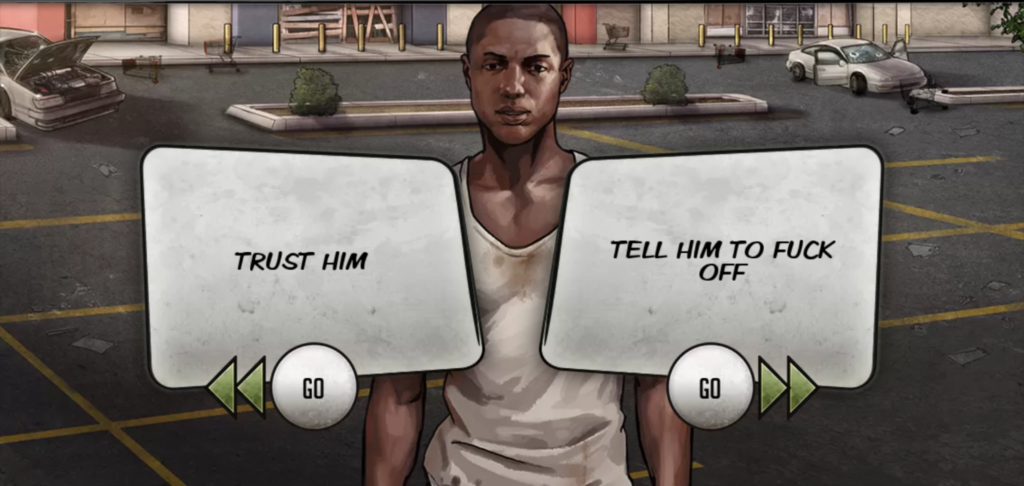Even the simplest games require attention, focus, and cognitive effort, which leaves users with fewer resources for regulating in-game decisions. Affordances, or things that help users do something, can be implemented to reduce cognitive load and effort. Since playing games requires learning, an intuitive design and inclusion of affordances can help reduce cognitive resources allocated to figuring out how a game works and increase allocation to where these resources are designed to be spent. There are four main affordances in UX design:
Physical
A physical affordance is a feature that helps users accomplish physical actions with the interface. An example might be the distance of a button on the interface of a mobile game from the user’s thumb while the phone is in a portrait or landscape position. While some games allow the user to play in either of these positions, The Walking Dead: Road to Survival is only playable in landscape. See below for a screenshot of the main town hub, which is one of the main interfaces of the game and where the player spends a bulk of his/her time when building the community and collecting resources.
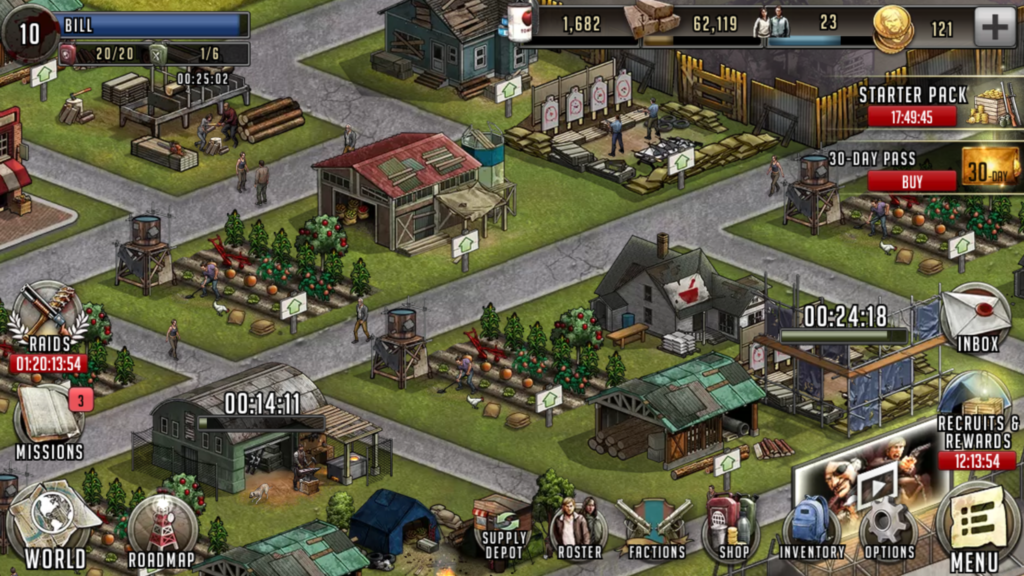
Although it is a busy interface, the main interactive icons populate the perimeter of the landscape-positioned interface. The type of device the player is using (i.e., phone or tablet) will determine the difficulty of reaching these icons with his/her thumbs but, from my experience, it is never an uncomfortable reach, even to access the top icons, when playing on a phone. Again, this will differ according to the size of the device and the size of the player’s hands.
Additionally, when a building, post, farm, etc. in the community is selected, the menu interface is retracted and replaced with a building-specific interface. Although the icons in this interface are similar in style to the menu ones, they are distinct by having different symbols that are also larger in size. Not only are these buttons easier to press, but this physical affordance, along with retracting the menu interface to avoid an overly-busy screen, results in the building-specific interface not becoming easily confused with/as the menu interface. These two interfaces can be seen at the bottom of the GIF below.
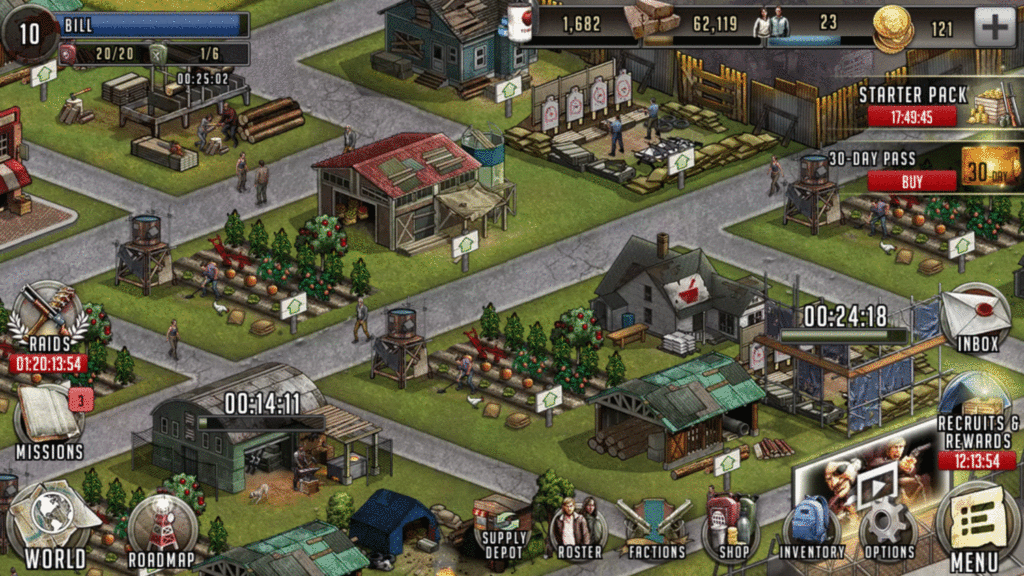
Cognitive
A cognitive affordance is a useful feature in design that allows the user to think, learn, understand, and know about something in an intuitive manner. For example, in the screenshot below, there are symbols that represent specific in-game resources that can be accumulated by the player. These symbols help the player understand the different types of materials at a glance and precisely how many of each he/she has at the moment.
![]()
Also, if the player is ever unsure of the current state of his/her resources, he/she can tap the symbol, which brings up an overlay with more information about the respective resource. See the GIF below for the overlays for each of these resources.
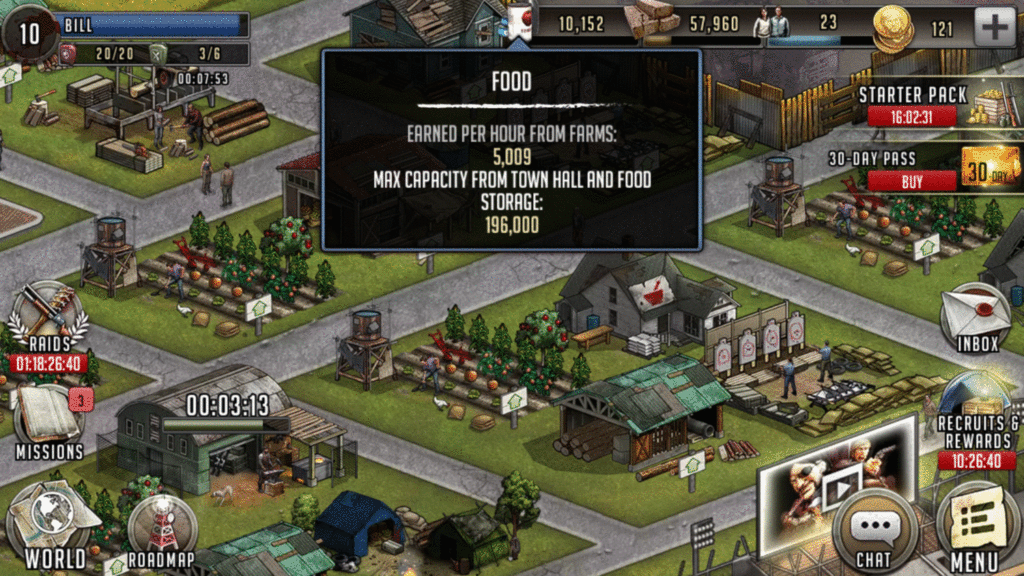
Sensory
A sensory affordance is a feature that helps users sense (i.e., see, hear, feel) something intuitively, which enhances perceptibility and (hopefully) information processing. At its core, The Walking Dead: Road to Survival is an RPG about community building and character development. This development is attained by fighting walkers and humans through single-player story missions, scavenging missions, and asynchronous PVP ‘Raids’. It is up to the player to build successful, synergistic teams and below is the screen that displays the player’s roster of characters. Since players can have multiple teams, IUGO incorporated useful signifiers that allow the player to see the most important information about each character right from this screen, such as player persona, trait, stats, and level, which are all indicated by symbols and numbers. Importantly, at the top of each character, it displays what team(s) that specific character is currently on. If a character is not currently on a team, it will be blank. This is a useful feature to help the player notice and quickly track what characters are on what team without having to proceed to ‘View Teams’.
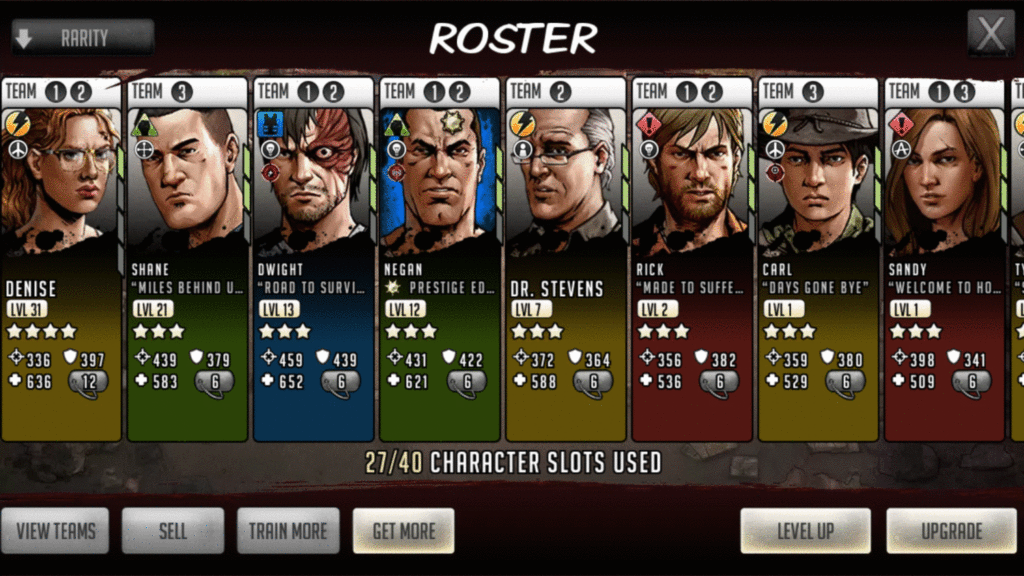
Additionally, the roster of characters can be sorted by rarity, type, cost, etc. by tapping the down arrow in the top-left corner, which leads us to the final type of affordance.
Functional
A functional affordance is something that simply adds functionality, such as sorting or filtering items in an inventory. Similar to the sorting feature for the character roster, the inventory interface in The Walking Dead: Road to Survival clearly breaks down items into specific categories along the top of the interface and allows the player to sort through the inventory, which can be activated by tapping ‘Sort’ in the top-left corner. After sorting, the player simply has to swipe left/right to see the items. This added functionality enables the player to more easily find a specific item in a game that has many, many different types of weapons and items.
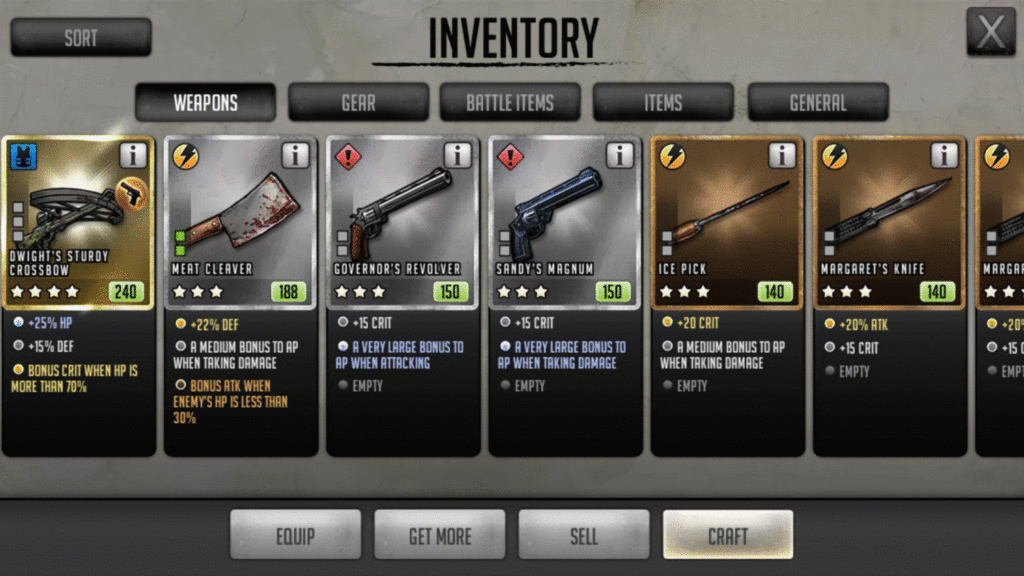
Final thoughts
There are four main affordances that are useful in UX design for games: physical, cognitive, sensory, and functional. Only some examples were discussed in this post and, while which affordances to incorporate into a specific game’s design depends on the design intent, many games will have instances of all four to some extent.
I hope this post has been informational. If not, well, as with many Walking Dead games, you’ll have a difficult decision to make:
